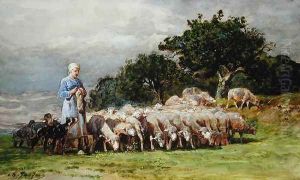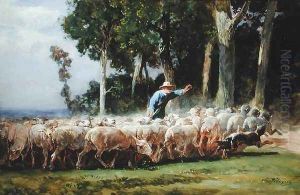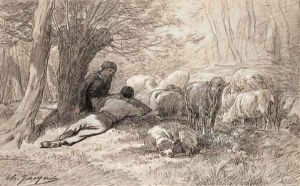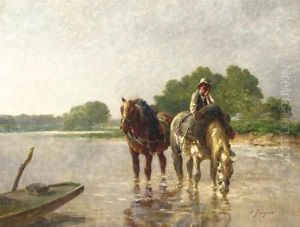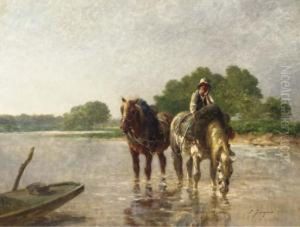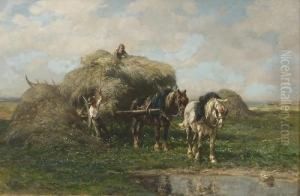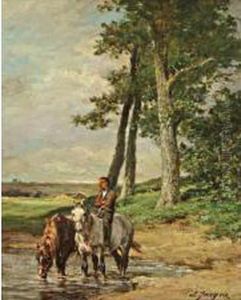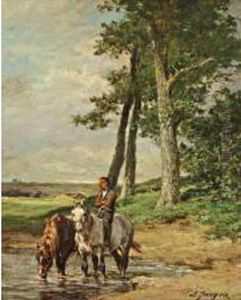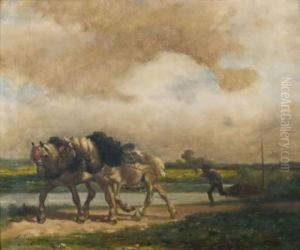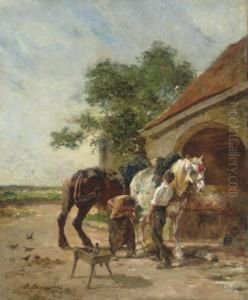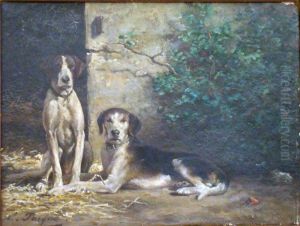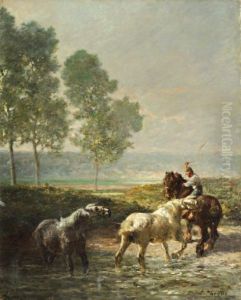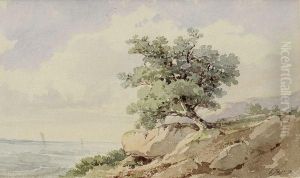Charles Emile Jacques Paintings
Charles Émile Jacque was a pivotal figure in the 19th-century French art scene, renowned for his landscapes and animal paintings as well as his etchings. Born on May 23, 1813, in Paris, France, Jacque's artistic journey was not straightforward. Initially, he embarked on a career as a map engraver and served in the French army before dedicating himself to art. His early works were influenced by his military background and included lithographs that depicted military subjects. However, it was his transition to painting and etching that marked the beginning of his significant contributions to art.
Jacque's move to Barbizon in the 1840s signified a pivotal shift in his career. The village of Barbizon was a magnet for artists who were drawn to the natural beauty of the Forest of Fontainebleau. Here, Jacque became an integral part of the Barbizon School, a group of artists who eschewed the romanticized landscapes of the time in favor of a more realistic portrayal of nature. Jacque, in particular, was fascinated with rural scenes, farm animals, and pastoral life, subjects that would dominate his oeuvre. His paintings and etchings of sheep, for which he is perhaps best known, reflect a meticulous attention to detail and a profound appreciation for the countryside.
Beyond his artistic endeavors, Jacque was also instrumental in reviving the art of etching in France. He was a founding member of the Société des Aquafortistes in 1862, an organization that played a crucial role in promoting etching as a respected art form during the 19th century. Through his etchings, Jacque was able to capture the delicate interplay of light and shadow, showcasing his technical skill and creative vision.
Despite his contributions to the Barbizon School and the art of etching, Jacque's work was sometimes overshadowed by his contemporaries. However, his dedication to depicting the simplicity and beauty of rural life has ensured his place in the annals of art history. Charles Émile Jacque passed away on May 7, 1894, in Paris, leaving behind a legacy that continues to be celebrated for its influence on realism in art and its contribution to the etching revival of the 19th century.
